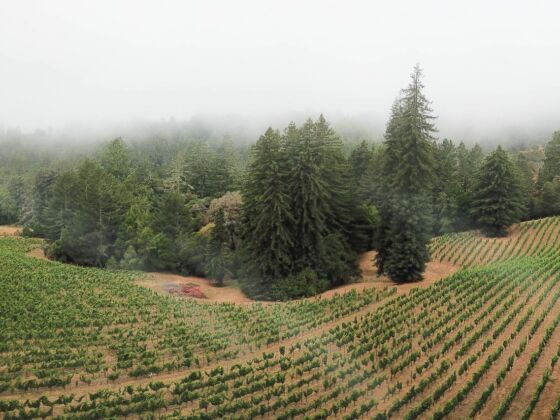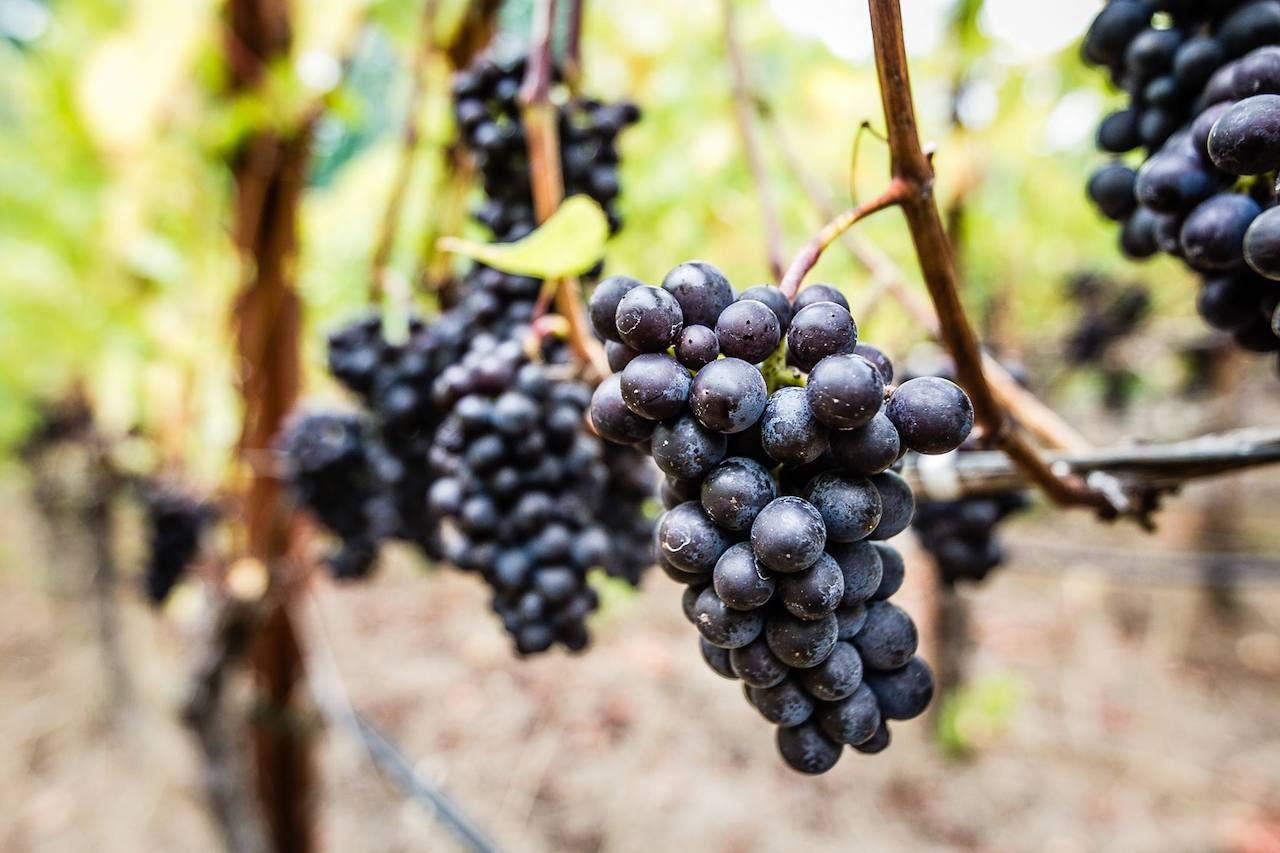On my most recent trip to Sonoma County, California, fresh out of extended quarantine due to the COVID-19 pandemic, I vowed to thrust myself into a new adventure. On this trip, I’d do something that didn’t involve umpteen pours of sultry Russian River Valley pinot noir or crisp Alexander Valley chardonnay, but was still linked to the region’s terroir.


What It's Like to Go Forest Bathing in Sonoma County, California
So I laced up my hiking shoes, put on a ballcap, and set off into the woods on a late-June afternoon with Red Car Wine Company. I was here for company’s small group forest-bathing experience on the Zephyr Farms seven-acre vineyard in Freestone, near the Sonoma coast, which is led by local certified forest-therapy guide Jenny Harrow-Keeler of EcoWisdom.
Forest bathing is based on the Japanese art of relaxing called shinrin-yoku. It’s all about slowing down and noticing what’s around you in nature in order to, as the thinking goes, regulate one’s nervous system. This isn’t some ancient form of healing. The Japanese coined the term and practice in the 1980s in response to workers in Japan dying of stress. They observed that time in nature could be as, if not more, healing than popping pills. Forest bathing received renewed attention in the United States during the pandemic as many people rushed to get outside.
But forest bathing isn’t just a walk in the woods. It’s full-on meditative.
I took a deep breath as I stood in a circle with nine others in a clearing, my feet hip’s width apart and my arms flat at my sides, hands outstretched. Although I’ve practiced yoga for about 10 years and have many helpful techniques in my tool kit for destressing, this was an entirely new experience. My mind was already spinning with what I would need to do next, an unfortunate casualty of an overactive brain and type-A personality.

Photo: Red Car Wine/Facebook
“What I love about forest bathing is we don’t have to be on a mat,” Harrow-Keeler said as our eyes remained closed, the wind whistling around us and creating a sort of cocoon. “There’s really no right or wrong way to do it. This is a way for us to kind of slow things down.”
Slow down I did as I finally settled into the rare moment of being in the woods in some country on a weekday afternoon rather than at my computer or in a winery tasting room. Did you know that trees creak? A tinny, high-pitched whine vibrated out of the redwoods, the world’s largest tree species, towering above us in the clearing. The sound was haunting and raw, and as rhythmic as a playground’s seesaw. Everything came after the tree including us.
“Now stick out your tongue,” Harrow-Keeler said. “What does the air taste like?” I opened my mouth, slipped my tongue out into the cool, damp air, and closed my eyes, knowing the Pacific Ocean was seven miles to the west. Minerality in the sea. Sweet perfume. The warm smell of wild mushrooms foraged in a place just like this and the smoky undertones embedded in the forest floor.
Our next task was to walk very slowly from the clearing to the vineyard located no more than the equivalent of half a city block away. Harrow-Keeler encouraged us not to rush — a real challenge for a fast walker like me. The deeper we walked into the forest, and then out, the quieter it became. A carpet of brittle leaves crunched beneath us each time we moved, shifting our weight from one leg to the next. We filled our lungs with fresh air, knowing the red wines and zesty white wines would come later.
I used to return from walks and remark that there either was a breeze or there wasn’t. But in that moment I clearly saw the different speeds in the breeze. “It’s not about being taught something new. It’s about remembering,” Harrow-Keeler explained. We know how to walk in the woods. But do we take walks often enough? I realized I don’t.

Photo: Red Car Wine/Facebook
Out of the forest and walking through a row of vines, the soles of my boots struggled to find footing along the uneven soil. Wind whistled through the vines, which were flush with wild, unpruned leaves that nearly covered up what we would later call “baby grapes.” Taking 10 minutes for this walk felt like a lifetime as I took in all that surrounded me: the varied shapes of leaves, the McMansion under construction on the hillside, the fact that the ocean feels near even though we can’t see it.
Few Sonoma County experiences are sans wine — including this one. At the end of the forest bathing, Harrow-Keeler invited participants to sip a glass each of Red Car Wine Company’s chardonnay and pinot noir in a different way than you did pre-forest bathing. On the trip, Harrow-Keeler noted that wine is one of the few beverages where you’re able to smell and taste the earth.
“It’s really not about being taught something new. It’s about remembering,” Harrow-Keeler said about the forest bathing. “My invitation to you when you get home is to keep on noticing.”